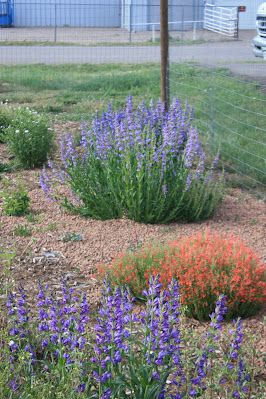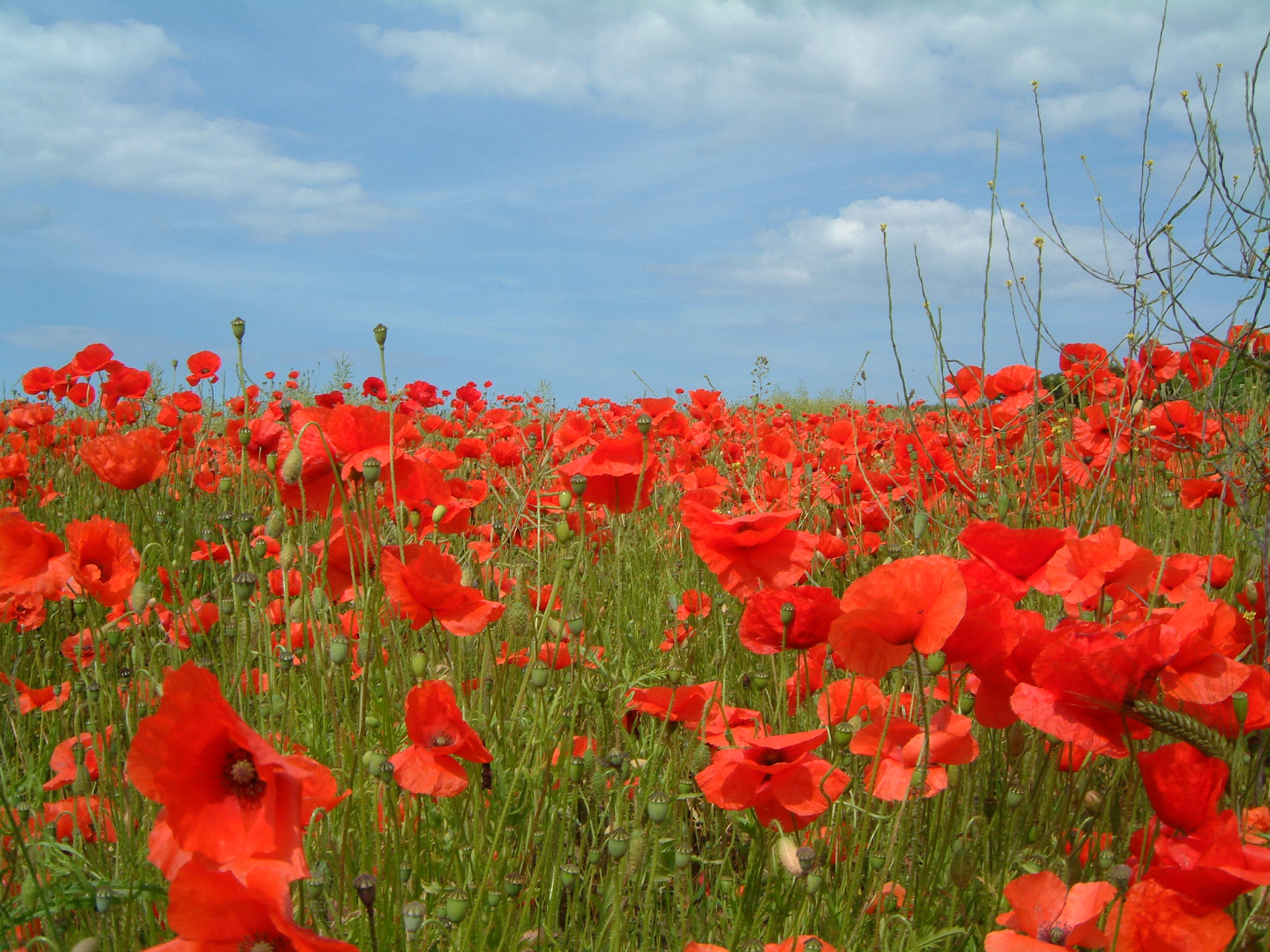By Yvette Henson, San Miguel Basin Extension
I first heard about High and Dry Gardens in Colorado in 2003
or 2004 when I was in graduate school at CSU in Fort Collins. It piqued my interest because my own graduate
research was a drought study. The
concept behind High and Dry gardens is to trial plants to see how they perform on
little to no supplemental irrigation.
I got my graduate degree and moved to Norwood, CO in 2006 to
work for CSU Extension. After I discovered
that there were several other Extension Offices in the state that had High and
Dry Gardens, we planted a High and Dry
demonstration garden outside our Extension Office.
 |
| Planting Norwood High and Dry Garden, August 2006 |
Norwood is a small town on Wrights Mesa, elevation 7020’. We are in Zone 5. Our average annual snowfall is 59.6”. Our average
annual rainfall is 15.10” and mostly falls in our ‘monsoon’ period of mid-July
through August. Norwood, like the rest of semi-arid Colorado, experiences regular
drought and subsequent water shortages and restrictions. It is not uncommon for residents who live
outside of the city limits to need to haul water to their homes for
household use.
I cross-referenced the plant lists for High and Dry gardens at
Extension Offices in Gilpin, Boulder, El Paso and Custer counties and selected only
the plants that were on all plants lists.
Even though High and Dry Gardens do not typically plant only natives,
ours did because those were the plants in common on the other plant lists.
Our original site was a large rectangular bed on flat ground. Our soil was sandy clay loam soil with a pH
of 8.4. We fenced it to keep our deer. Each year, we timed our planting to coincide
with the annual summer monsoon. Once the
plants were planted, they were watered in and never watered again. In drought years, I did consider applying the
average annual rainfall amount but never did.
 |
| Norwood High and Dry Garden in June 2009 |
The original Norwood High and Dry Garden was there until
2019 (13 years) when the area was leveled to build a new sheriff’s annex.
 |
| Norwood High and Dry Garden in Fall 2017 (note there is no fence) |
The plants that survived and performed best
were mostly shrubs. Following is a list of the best performers.
Golden currants, Ribes aureum. All varieties of golden currants require
little to no supplemental irrigation. Golden
currants are my favorite of the High and Dry shrubs. They have beautiful golden flowers in spring (some varieties flowers are more fragrant than others), followed by edible yellow, orange or black
fruit. The shrubs end the growing season with deep-red fall color before
the leaves drop for winter.
 |
| Golden currants |
Mountain mahoganies: Cercocarpus montanus, C. ledifolius and
C. inticatus. Although the all did well, our favorite of the
mountain mahagonies was Cercocarpus ledifolius, curl-leaf mountain mahogany. We had a 6' x
3’ specimen that kept most of its leaves through the winter.
 |
| Curl-leaf mountain mahogany(photo credit Plant Select, Gary Epstein) |
‘Baby Blue’ dwarf rabbitbrush, Chrysothamnus nauseosus var.
nauceosus, a Plant Select Introduction was my 3rd favorite shrub in
our High and Dry Garden. It grew to a
tidy low mound, 12-18” x 3’. The yellow
blooms were welcome late summer color.
 |
| Plant Select 'Baby Blue' rabbitbrush (photo credit Plant Select) |
Both ‘Kannah Creek’ sulphur buckwheat, Eriogonum
umbellatum (a Plant Select introduction) and James buckwheat, Eriogonum
jamesii, performed exceptionally well in our garden. The deer were not able to eat the blooms like
in our Plant Select Demonstration Garden because of the fence. Both buckwheats form a low mat of
semi-evergreen leaves that get good fall and winter color.
In spring and summer, the yellow or cream bracts of the flowers grow
about a foot above the foliage.
 |
'Kannah Creek' Buckwheat (photo credit Plant Select)
|
 |
James Buckwheat (photo credit Al Schneider, SW Colorado Wildflowers)
|
Rocky mountain penstemon, Penstemon strictus, almost ate the
garden. The showy and reliable early- summer
blue flowers reseeded prolifically in our gravel mulch! So, we learned to cut the blooms off to
prevent reseeding. I found this ironic because most gardening books list this plant as short-lived. Perhaps they are in watered gardens.
 |
Rocky mountain penstemon in Norwood High and Dry Garden (blue flowers)
|
Other plants worth a mention are pussytoes, Antennaria
parvifolia; blanket flower, Gaillarida aristata; and bluemist penstemon, Penstemon
virens.
 |
blanket flower in background, pussytoes in mid ground
at Norwood High and Dry Garden
|
The county gave us a new border for a High and Dry Garden in 2022.
 |
| Master Gardeners planting our new High and Dry Garden Berms in 2022 |


















